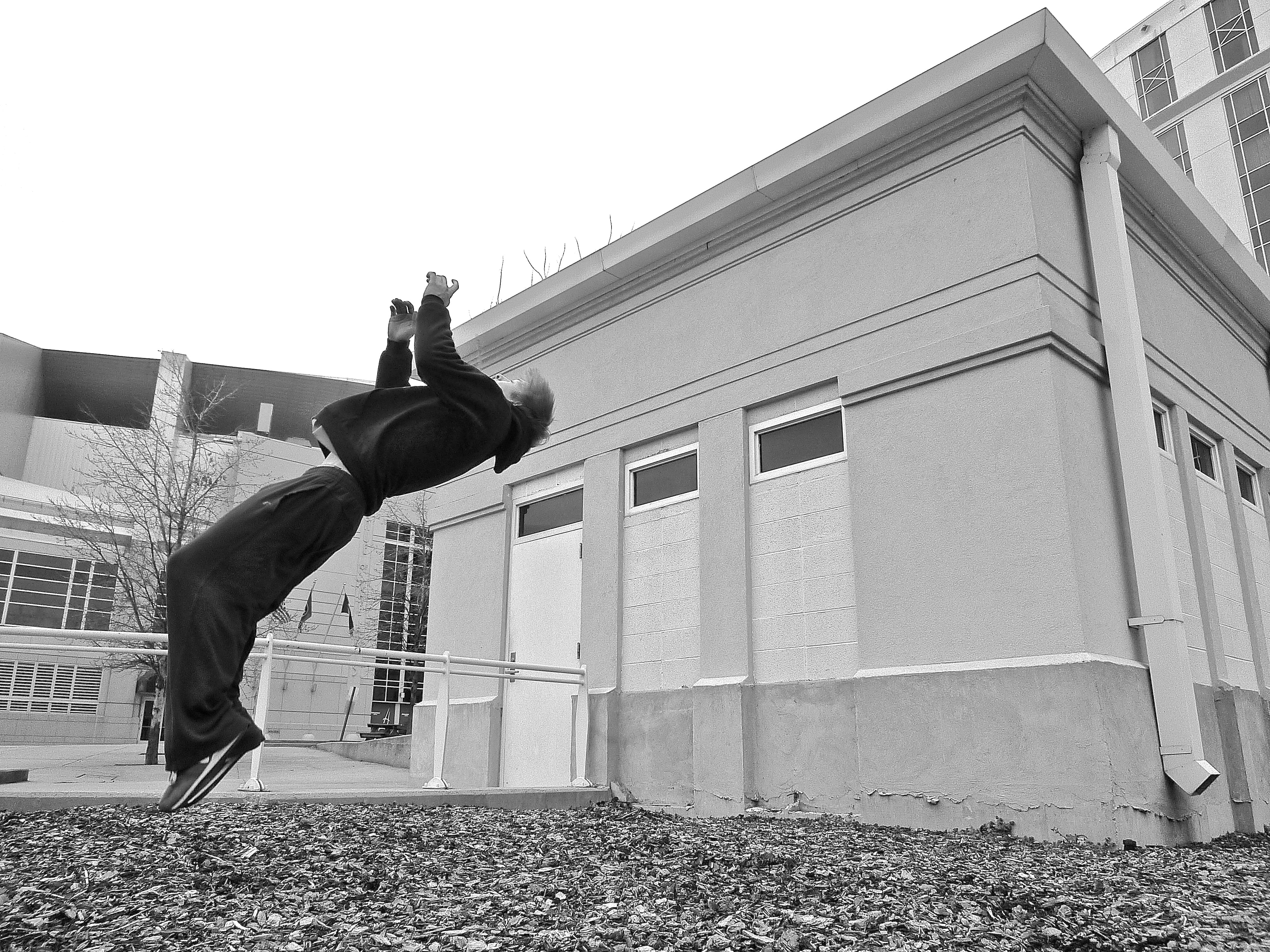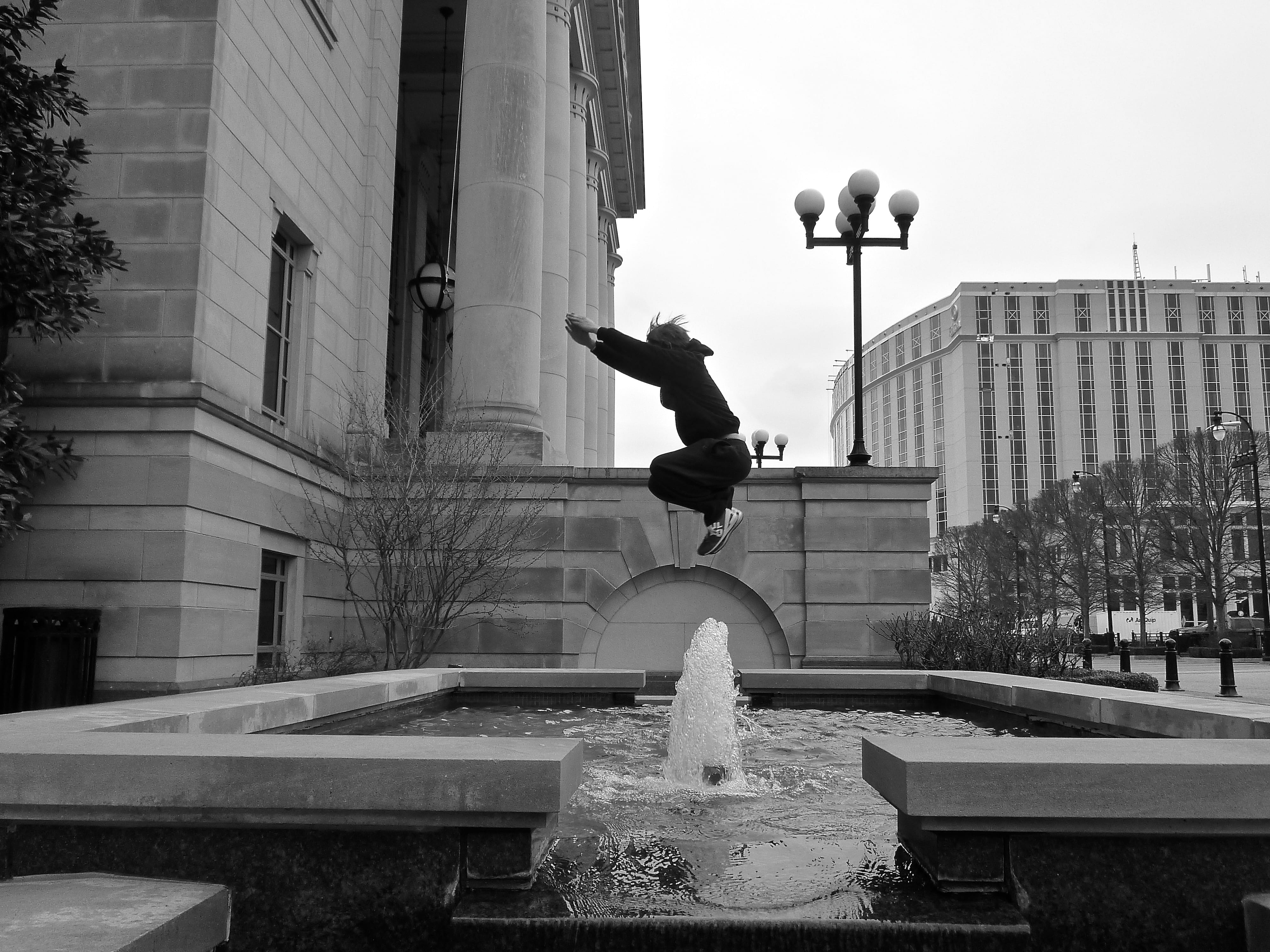They jump on a building roof and run like their lives depend on it. Walls seem to be nothing but support for their incredibly crazy stunts. Gravity doesn’t play a role in their backflips. It’s like watching the Bourne movies right in front of your eyes.
This is not an action movie or a criminal escaping from the police. In Middle Tennessee teenagers and college kids are actually embracing parkour as exercise and a lifestyle. They are free runners.
The practice started in France in the 80s and it has since spread around the world and gained visibility in the United States through television shows such as American Ninja Warrior.
Also known as “the art of the movement,” parkour developed from aspects of military training and includes running, climbing and swinging to vaulting, jumping and rolling.
Close your eyes and imagine a stuntman bouncing from walls and rolling on top of buildings. That’s what parkour looks like.
The training works in steps. Simple rolls come before back flips and more dangerous moves. Patience is an important skill when it comes to parkour.

“We don’t start learning jumping from building to building, or doing flips around the city,” said Josh Roberts, who started training three and a half years ago by watching videos on Youtube, one of the main channels of propagation for parkour.
“Parkour is about knowing what your body is capable of,” Roberts said.
From rolling around the backyard to doing handstands in his bedroom, Roberts developed his practices until he crossed paths with the Middle Tennessee Parkour And Free Running group.
Jumping from walls and using any element from the environment as base for the stunts also requires concentration and discipline. Parkour doesn’t only focus on the body. It also centers on mental control and power.
“We are so fearless as kids and we lose that with age, parkour helps us go back to that fearless moment,” Roberts said, “It’s like you’re flying for a second.”
Nathan Nix, who’s been training since the seventh grade, sees parkour as a way to clear his mind.
“You’re completely in the moment. You kind of get to lose yourself in the flip for a bit,” he said.
Although the sport doesn’t require anything but the body and a place to train, urban free runners face their own issues in an urban environment.
“We stay off the roofs and private property and we make sure to leave when asked,” said Nix.
With parkour, it’s possible to train anywhere: in the country, cities, backyards, and of course, buildings and city walls. Some of the favorite places to train in Nashville are private properties downtown, such as the AT&T building front lawn.
“Most people just don’t want us hurt on their property, fear of lawsuits and all that,” added Nix, “So we just respect them and they’re usually cool about it.”
By becoming more popular because of TV shows and Youtube videos, the movement sometimes is not taken seriously by people who don’t understand what’s behind the stunts and flips.
“We often see people running around and recording videos everywhere just making fun of it,” Roberts said. The lack of awareness can bring serious accidents and connect the image of parkour to foolish, reckless practices.
Yes, broken bones and bruises can be close partners of parkour. But its philosophy is centered on controlling oneself and most of its experts see reckless injury as a transgression from the true meaning of parkour.
Out of all the stunts, the most important movement is, no doubt, the silliest: knowing how to properly fall. The high jumps and drops require full awareness of landing and how to distribute the impact to the entire body, Roberts pointed out.
Flexing the knees properly and rolling on the shoulders are the basic movements every free runner learns before attempting anything else. These are the first movements Roberts use to warm up before climbing and jumping walls.
“It’s dangerous sometimes, but what most people don’t understand is that most of us spend hours, every single day training the same move, flip, technique,” said Christian Gonzalez, the founder of Middle Tennessee Parkour and Free Running group.

In 2009, a sophomore in high school, Gonzalez started training parkour. With time, he and his friends realized the movement was becoming more popular in the area. They, then, created a page on Facebook, where people interested in training could easily find peers. Since 2011 the page attracted people from all over the state and it has more than 800 likes.
“The page basically turned into a social hub for most people that train parkour,” Gonzalez said.
Throughout the year, the group hosts jams, gatherings of free runners in the area. “So far, we had one in Clarksville, Chattanooga, Knoxville, Nashville and Murfreesboro,” Gonzalez said. The plan for this year is to have an even larger event, called the International Parkour Day in Memphis or Atlanta.
Although competitions are sometimes present in these jams, the focus is welcoming new members and making it a learning experience to all.
“The Parkour community is very much inviting and very accepting of new comers, and definitely welcoming,” Roberts said.
With high levels of flips and stunts, concentration and self-awareness are constant reminders that doing it just for attention never pays off. The important part is learning how to be the best version of yourself in the discipline and accept the limitations that come with it.
“You can never be the ‘best,’ everyone has their style whether they come from a gymnastics background, dance, breakdancing, or parkour,” said Johnny Covington, 23, certified parkour coach.
The physical and mental control that comes with training parkour has also helped him deal with obstacles and challenges in his life.
“Where I might normally struggle with a certain situation in life, it becomes so much easier to overcome it,” he said, “because it’s literally what I’m doing all the time: overcoming mental and physical obstacles.”
“It honestly feels like a super power,” Covington said, “Parkour is the closest that our world has to real super powers, so far.”